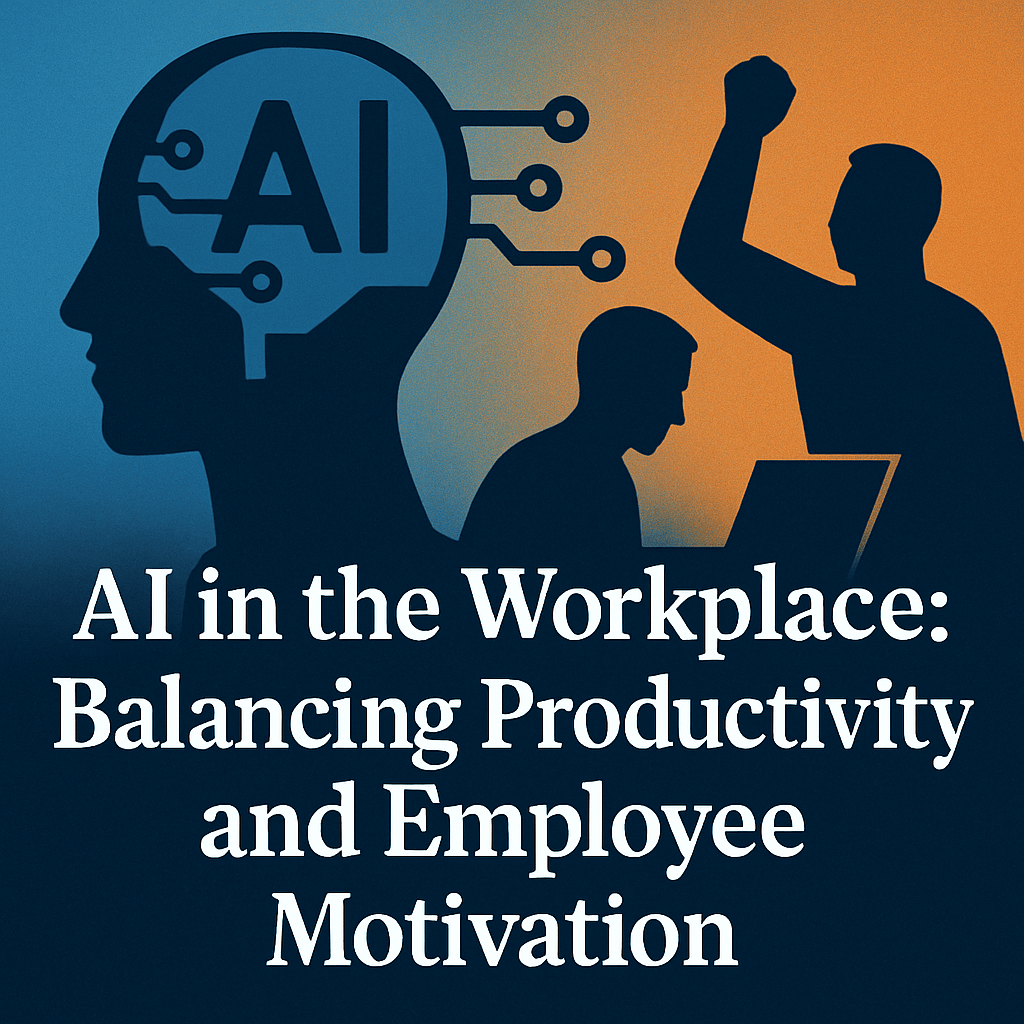AI in the Workplace: Balancing Productivity and Employee Motivation

As artificial intelligence (AI) becomes increasingly integrated into the workforce, an intriguing paradox is emerging: while AI can significantly enhance employee productivity, it may simultaneously dampen motivation and engagement.
A recent study published in Scientific Reports reveals that workers utilizing generative AI tools, such as ChatGPT, experience a notable decline in their intrinsic motivation, coupled with increased boredom in their tasks. Specifically, employees showed an 11% decrease in intrinsic motivation and a staggering 20% uptick in feelings of boredom once they became accustomed to AI assistance.
Study Design and Key Findings
The researchers employed a rigorous methodology by conducting four distinct experiments with a sample size of 3,500 participants. Each subject was assigned various real-world tasks—including but not limited to composing a Facebook post, drafting an email, and writing performance reviews for subordinates. The experimental design allowed for comparative analysis, where some participants utilized ChatGPT for one task before reverting to traditional methods for subsequent assignments, while others completed both tasks without AI support.
According to the study authors—Yukun Liu, Suqing Wu, Mengqi Ruan, Siyu Chen, and Xiao-Yun Xie—this decline in motivation can largely be attributed to a sense of disconnection that emerges when workers rely heavily on AI. They argued that automation’s ability to remove critical thinking and personalized input reduces engagement, particularly in tasks that require nuanced judgment, such as performance reviews.
“Our findings have significant implications for companies aiming to harness the productivity potential of generative AI without impairing employee motivation in their daily responsibilities,” the study researchers noted in an article published in the Harvard Business Review.
The Growing Fascination with AI in Corporate America
Despite the motivational pitfalls identified in the study, corporate America remains enthralled by the possibilities that AI offers for enhancing productivity. As businesses navigate this transformative landscape, they face pressing questions about how best to implement AI training and ensure that new technologies enrich workflows rather than detract from employee satisfaction.
The allure of productivity gains in the age of AI cannot be overstated. Organizations are increasingly adopting AI-driven tools to streamline operations, reduce costs, and maximize output. However, this rush toward technological adoption brings with it the challenge of addressing emotional spillover effects, which can adversely affect workplace morale.
Strategies for Mitigating Motivation Loss
The researchers propose five actionable strategies for companies looking to reap the benefits of AI while maintaining high employee motivation:
- Blend AI and Human Contributions: Instead of relying solely on AI to draft performance reviews, companies could use AI to create outlines while allowing managers to personalize and refine the content.
- Design Engaging Solo Tasks: Tasks that permit a feedback loop with AI—for example, collaborative brainstorming sessions—can enhance engagement and keep employees connected to their work.
- Promote Transparency in AI Collaboration: Clearly communicating the role of AI as a supportive tool rather than a replacement can help assuage worker concerns about job security and autonomy.
- Rotate Between AI-Assisted and Independent Tasks: Both managers and employees should aim for a balance between AI-assisted work and traditional responsibilities to sustain engagement levels.
- Provide AI Training Focused on Mindfulness: Training programs can empower employees to leverage AI tools effectively while remaining cognizant of their contributions.
“By thoughtfully designing workflows that integrate generative AI, businesses can unlock substantial benefits that do not compromise workers’ motivation and engagement,” the researchers concluded. “The future of work isn’t solely about what AI can accomplish—it’s about the synergistic achievements of humans and AI working together.”
Conclusion: Balancing Efficiency and Employee Satisfaction
As AI technology continues to advance and reshape the work environment, organizations must tread carefully to balance productivity enhancements with the essential human elements of motivation and satisfaction. The insights from the latest study serve as a valuable cautionary note for businesses navigating this complex landscape.
In summary, while the integration of AI holds immense potential for improving productivity, companies must implement strategic measures to ensure that their workforce remains engaged and motivated. The evolving relationship between AI and employee motivation will be critical in shaping the future of work.
Further Considerations
As this landscape evolves, future research may delve deeper into the long-term effects of AI on employee morale across various sectors. Understanding generational differences in attitudes toward AI may also yield insights that refine implementation strategies further.
Moreover, companies should consider leveraging employee feedback mechanisms to adjust AI integration approaches dynamically. Such iterative fine-tuning can help prevent any detrimental effects on work culture and support a more resilient workforce.
Source: fortune